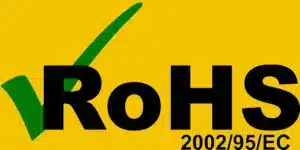The relative humidity (RH) directly affects the ability of a surface to store surface charges. The higher the RH, the less time an item will hold a charge. The method of surface charge reduction (due to increased RH) can be attributed to recombination and or conduction. As the RH increases, so does the natural conductivity […]
All items are made from small atoms. These atoms are made up of even smaller items called protons, neutrons and electrons. The protons are charged positive, the neutrons have no charge and the electrons are charged negative. Under normal conditions there are the same amount of protons and electrons giving atoms no charge. However, these […]
Before setting up your ESD workstation, you will firstly need to refer to the most up to date IEC61340-5 standard which will give you all of the information you will need to set up an ESD workstation safely and within the current specification. What do you need to set up your ESD workstation? A Work […]
An Electrostatic Protected Area, also known as an EPA, is a designated area where static is controlled under strict regulations. A static safe handling area could be a bench, a room or any other designated area and should not have any ‘static field’ greater than 100v maximum. Within this designated area, all surfaces, objects, people […]
No, these signs are made from an insulative material which can generate a static charge. This could potentially harm nearby static-sensitive objects and cause significant damage to them. It is recommended to use ‘ESD signs’ outside of an EPA environment- this could be near your EPA’s entrance. View our ‘ESD signs’ range here.
Yes – an ESD floor is part of a system for personal grounding. “For standing operations, personnel can be grounded via a wrist strap system or by a footwear-flooring system. When a footwear-flooring system is used, personnel shall wear ESD footwear on both feet and the two following conditions shall be met: • The total […]
This is usually in the datasheets of the individual components. It is often referred to as human body voltage (HBV).
There are 3 possible solutions: 1) If the electrostatic potential measured at the surface of the process required insulator exceeds 2,000 V, the item shall be kept a minimum of 30 cm from the ESDS; and 2) If the electrostatic potential measured at the surface of the process required insulator exceeds 125 V, the item […]
If the limits in IEC 61340 -5-1 are exceeded, the ESD control program shall include a tailoring. Tailoring is accomplished by evaluating the applicability of each requirement for the specific application. Upon completion of the evaluation, requirements may be added, modified or deleted. Tailoring decisions, including rationale and technical justification, shall be documented. (IEC 61340-5-1 […]
This is a tricky one and 2 points need to be considered. 1) If the water bottle is conductive and grounded then there is no issue. 2) If the water bottle is not conductive it may produce an electrostatic field. If this is the case then they need to be kept a safe distance from […]


